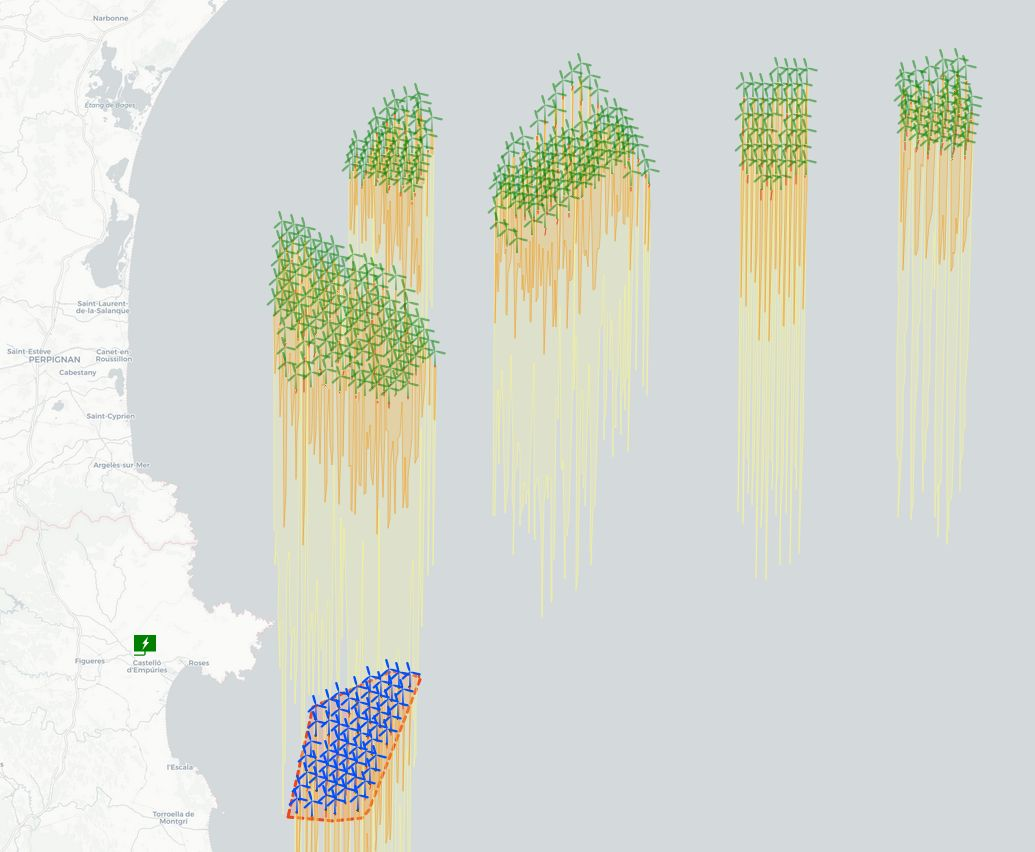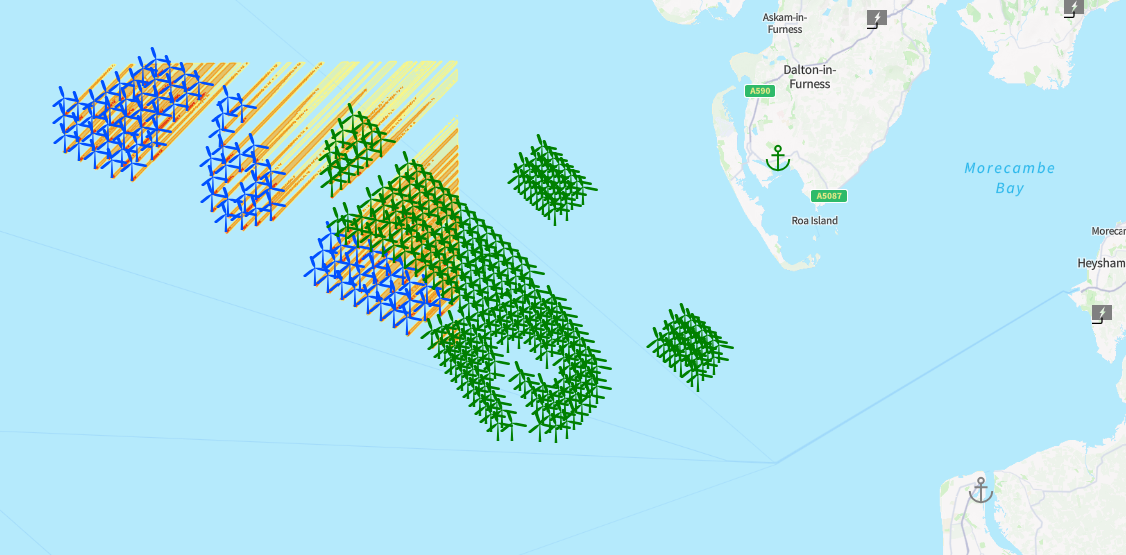Offshore Wind in One Hour: Designing for neighboring clusters and wake steering
As offshore wind development intensifies, wind farms are no longer solitary installations, they are part of densely packed regional clusters. These clusters span coastlines and open seas, with multiple projects often built close to one another. In this increasingly interconnected landscape, a need has arisen for more efficient workflows. As a result of addressing those specific needs, a new technology has been developed that enables complex wake interaction simulations, normally requiring several days, to now be completed in just one hour.
This technological leap is redefining how we plan, design, and future-proof offshore wind farms. It is not merely a gain in speed, but a fundamental shift in how developers approach design challenges in a maturing and spatially limited industry.
From days to minutes: Rethinking at scale
Currently, simulating wake losses in large offshore regions — especially those involving multiple neighboring wind farms — requires significant computational resources and time. Traditional models often struggle to deliver timely results when tasked with capturing the effects of both internal and external wakes. Full-scale calculations that aim to deliver accurate outcomes, including interactions with the neighboring wind farms and hypothetical future developments, can last up to three days. This has posed a significant obstacle for developers and engineers during the early development phase, where time is a valuable asset, and time-consuming simulations often delay the entire initial stage of wind farm planning.

Today, that obstacle is being eliminated. Recent advances in simulation technology now make it possible to calculate wake losses across thousands of turbines within a single hour, without sacrificing resolution or quality. This new capability enables quick and interactive layout optimization and supports faster investment decisions. It also provides engineers with actionable insights during the stages of planning, when layout decisions have the greatest influence on project performance and long-term viability.
Tools that support different types of common-used engineering wake models and Eddy-Viscosity based simulations, including optional blockage effects, empower users to generate highly accurate results without compromising on speed. The capacity to include thousands of turbines in a single run highlights the scale and ambition of this new approach.
For developers working on large regional zones or future project pipelines, scale is critical. It allows for holistic, region-wide analysis rather than isolated project-level optimization. That shift represents a new phase in offshore wind design, one where digital tools keep pace with the scale and complexity of industry ambitions.
Toward predictive control: Early integration
Closely linked to this speed revolution is the ability to incorporate wake steering strategies during the design phase. Once limited to post-construction optimization, wake steering is now being included at the concept stage, where its potential impact on yield is far greater.
Modern modeling technology now allows engineers to include wake steering into wind farm layouts from day one. This means that developers are no longer limited to correcting wake losses after installation. Instead, they can proactively implement control strategies that anticipate both internal and external wake interactions during the design phase itself. The benefits of early wake steering integration include increasing potential yield and reducing the need for costly post-construction adjustments.

When paired with rapid wake simulation technology, wake steering becomes not just a corrective measure, but a strategic design asset. With the ability to run multiple control scenarios quickly, developers gain the flexibility to test and compare layouts in a variety of conditions. This leads to smarter decisions, better spatial efficiency, and a more robust energy output profile from the start.
A turning point
As offshore wind clusters grow in scale and complexity, the sector’s ability to simulate quickly, plan intelligently, and adapt dynamically will define its success. The shift from multi-day modeling to one-hour simulations marks more than just a technological advancement, it is a step toward a broader evolution in how wind farms are conceived, developed, and managed.
As the industry continues to expand, the advantages of one-hour cluster simulations will only grow. From reducing planning risk to accelerating decision-making, these tools are enabling a new level of strategic insight and precision in offshore wind design.
Pioneering platforms show what’s possible when engineering expertise and digital innovation are combined. The result is a more responsive, robust planning process, one that meets the demands of the energy transition with tools designed to handle complexity at scale.
With every hour gained in simulation time, offshore wind gains another step toward a smarter, more resilient future.
Edvald Edvaldsson is Co-founder and CTO at Youwind Renewables, which offers IT solutions for offshore wind projects, integrating engineering and cost data to optimize development.
Youwind Renewables | youwindrenewables.com
Author: Edvald Edvaldsson
Volume: 2025 July/August








